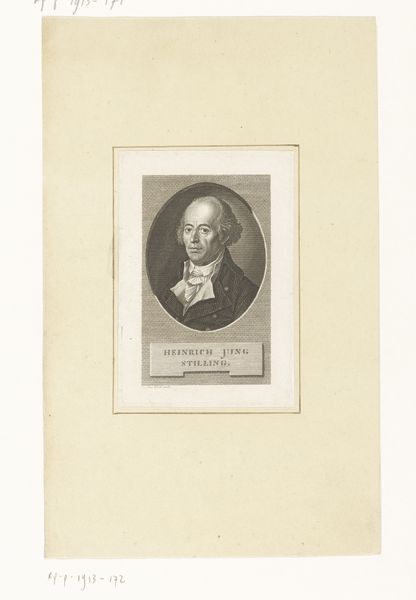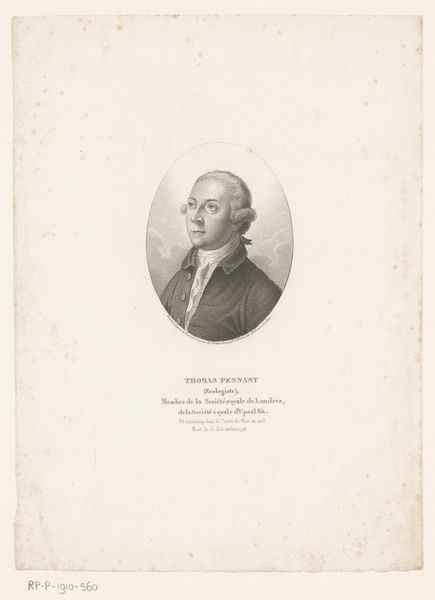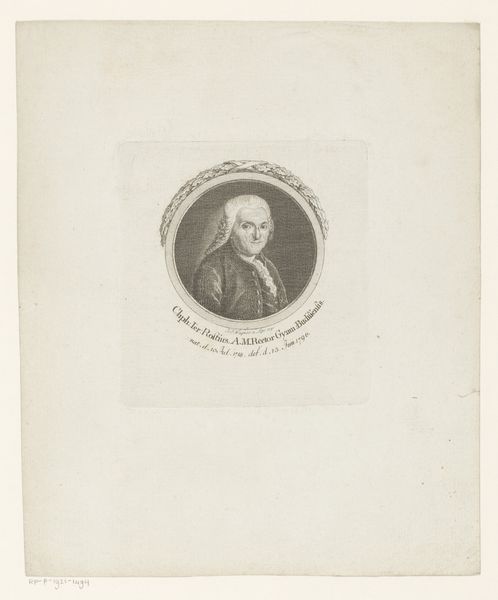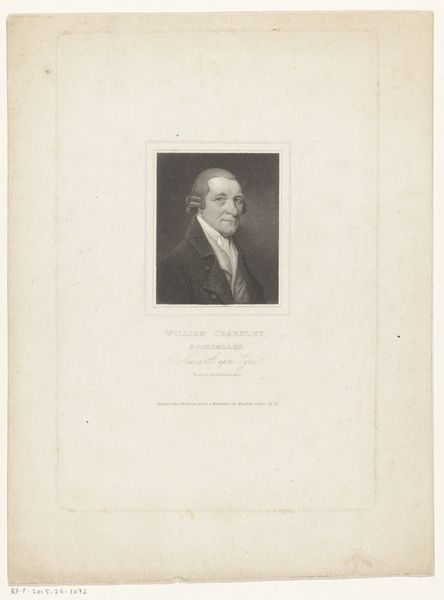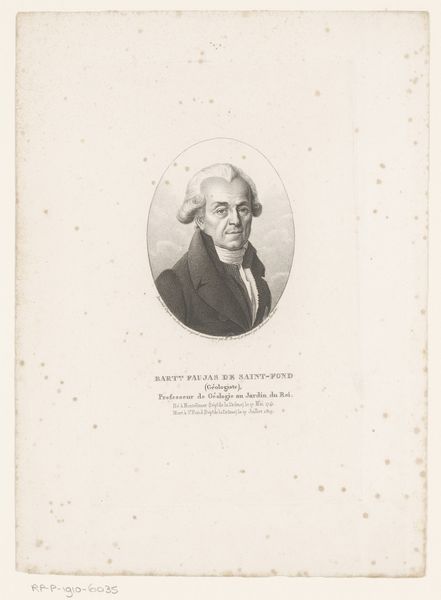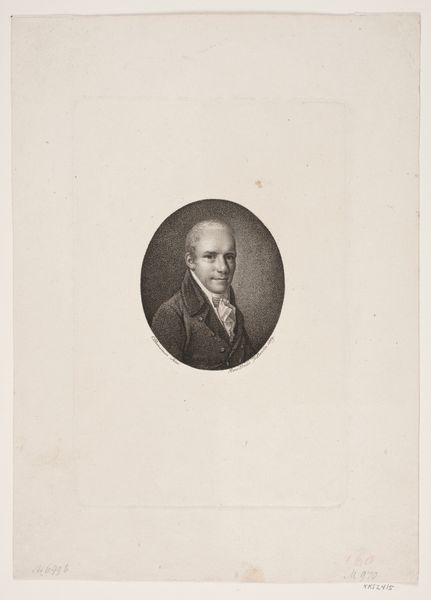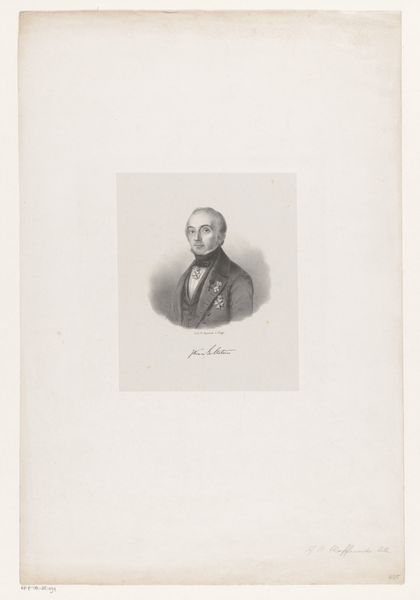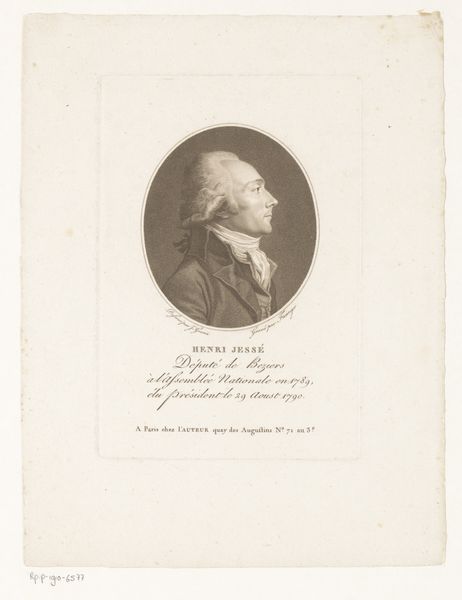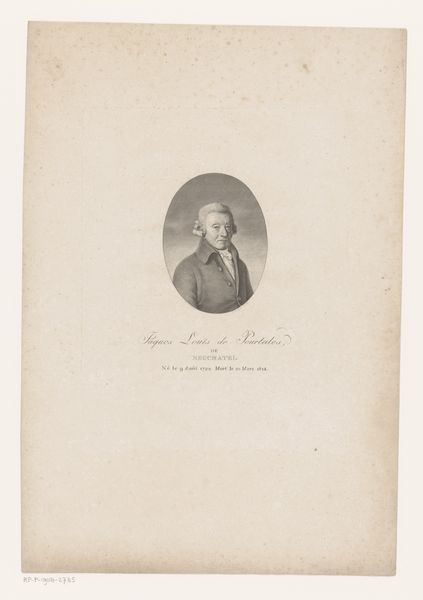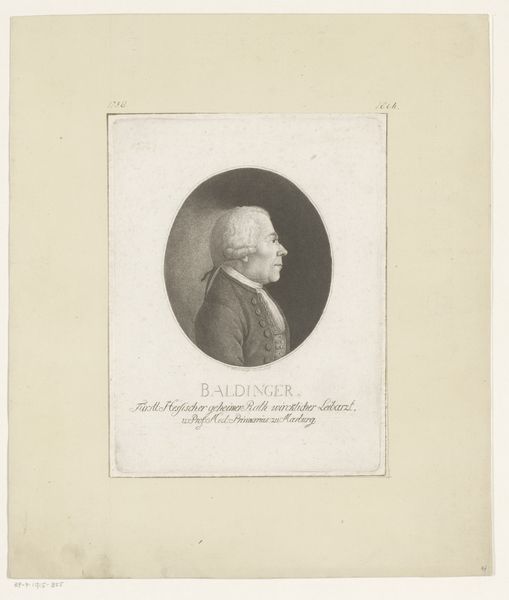
engraving
#
portrait
#
neoclacissism
#
old engraving style
#
history-painting
#
engraving
Dimensions: height 164 mm, width 112 mm
Copyright: Rijks Museum: Open Domain
Curator: Welcome. Here we have John Chapman's engraving, "Portret van schrijver Samuel Jackson Pratt," created sometime between 1800 and 1808. It captures the likeness of the writer Samuel Jackson Pratt. Editor: Wow, it's so clean and crisp for an engraving that old. Almost austere, really, with that stark oval framing and the minimal shading. Makes you wonder about Mr. Pratt himself, doesn't it? Curator: Indeed. Chapman was working within the Neoclassical style, a movement that drew heavily from classical antiquity and emphasized order and clarity, seen in the linear precision and formal portraiture here. Engravings like these were vital for circulating images and ideas. Editor: He's got that "serious writer" look nailed, doesn't he? I imagine him pontificating in a dimly lit room filled with dusty tomes and the ghost of quill pens. Though the guy seems a bit stiff, like he swallowed a ruler, or he's not quite enjoying the pose. I feel kind of sorry for him, like a pinned butterfly. Curator: That slight discomfort might speak to the evolving role of the writer during this period. While Neoclassicism harkened back to the perceived stability of the past, society was rapidly changing, leading to new roles and anxieties for intellectuals like Pratt. An engraving was not only a mode of immortalizing, it was also one of popularizing a face in nascent print media. Editor: And yet, with all its rigid perfection, you feel that the soul is absent in some degree. You know he’s more than just some celebrity, but maybe that fact can’t be reflected. It makes you wonder what it might’ve been like to have been him at the center of literary London! Maybe I wouldn’t have smiled, either! Curator: It serves as a valuable window into understanding how individuals navigated social expectations and sought to solidify their legacy during a pivotal era. The formal restraint might be indicative of societal pressures to project a certain image. Editor: All in all, he did a great job, and the print feels iconic, so solid. Almost permanent even when he seems less than relaxed. Thanks for pointing that out. Curator: My pleasure. There’s always more to a picture when one places its origins in conversation with our impressions!
Comments
No comments
Be the first to comment and join the conversation on the ultimate creative platform.

